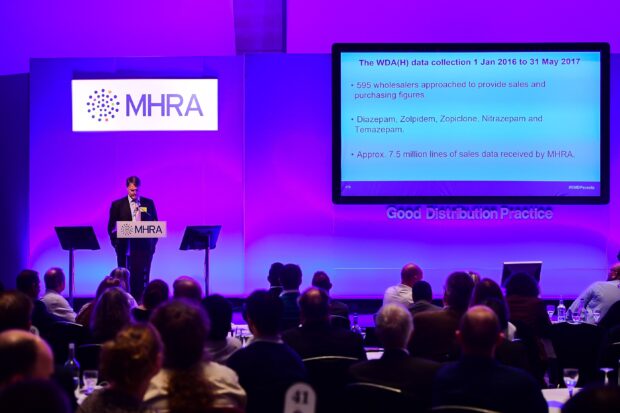
In my last blog post - How the implementation of Safety Features progresses 5 months in - I wrote about the checking of bollinos or vignette type labels for packs from Italy and Greece, where the 2D barcode is not yet implemented. We also provided guidance on what checks should be performed and provided this guidance on our GOV.UK website.
In this post I would like to share with you experience gained from recent events to assist you in your efforts to comply with the Falsified Medicines Directive (FMD) requirements.
What aspects of FMD are concerned with the supply chain?
From the definition for a falsified medicine, Human Medicines Regulations (HMR) 2012 as amended Regulation 8 clauses (b) and (c) fall into scope, with this post specifically focusing on (c):
'Falsified medicinal product' means any medicinal product with a false representation of:
(a) its identity, including its packaging and labelling, its name or its composition (other than any unintentional quality defect) as regards any of its ingredients including excipients and the strength of those ingredients
(b) its source, including its manufacturer, its country of manufacturing, its country of origin or its marketing authorisation holder, or
(c) its history, including the records and documents relating to the distribution channels used
[The Human Medicines Regulations (as amended by SI 2013;1855 Regulation 8 (a)(vi))]
We have spoken and posted on many occasions about the importance of knowing who you are dealing with and how to stay vigilant with respect to some of the pitfalls.
During the 2018 GDP Symposium, Naseem Hudroge and Bruce Figg from the MHRA Enforcement section talked about the illegal diversion of benzodiazepines and Z drugs (a group of nonbenzodiazepine drugs with effects similar to benzodiazepines. These drugs (the names of which usually begin with the letter 'Z') are used in the treatment of sleep problems). The presentation covered:
- the investigations conducted
- emerging trends
- awareness of social engineering
- phishing and email spoofing.
The information provided in the presentation can also be used in the general context of ensuring the validity of the distribution channels and avoiding being hoodwinked by a supplier into believing a different reality.

Social engineering relies heavily on human interaction and psychological manipulation of people into breaking normal security procedures.
Licence holders should always remain vigilant
Naseem Hudroge and Bruce Figg: MHRA Enforcement Group, GMDP Symposium 2018
In his recent post, Peter Brown (Senior GDP Inspector) described some of the approaches taken by criminals who use deception to obtain stock or divert falsified medicine back into the legitimate supply chain. In a separate post, Lead Senior GDP Inspector Tony Orme describes measures that wholesalers can take to reduce the chance of dealing with unauthorised suppliers or customers. Aside from deception, being left in a position where you have to recall falsified medicines from the market can be reputationally and financially damaging.

Falsified medicines pose a threat to the legitimate supply chain and a risk to public health. This is particularly apparent when the medicines are:
- in short or restricted supply
- have specific administration requirements
- are used for specific patient populations
- require special storage conditions, such as cold chain
What else can we do to ensure we're not receiving falsified medicines?
In addition to the controls outlined in the earlier posts by Peter Brown and Tony Orme, in our experience, after an event involving falsified products, goods-in staff often report that they had suspicions or thought that something unusual was occurring. Staff should always be alert to any unusual activities and have a formal mechanism by which they can raise their concerns.
Other safeguarding examples include the following (this list is not exhaustive):
Deliveries in suppliers' own vehicles - especially where they are not UK based - should be investigated further
- supplier arrives in a rented van – there may be a good reason for this but be alert to it and establish if legitimate reason or not
- what boxes are the stock arriving in – are these unusual in anyway or indicate that maybe they have been stored elsewhere before coming to you?
- even if you are handed a data logger or printout of the data logger, how do you know it was for that journey?
- how long should the journey have taken for them to reach you? what was the transit route? do you know? can you be sure of the transit points and conditions?
- deliveries in taxis/personal cars - ask yourself: under what situation would this be acceptable?
- if you reject the delivery and it is returned to the supplier, where is it being returned to - a different address to where you expect?
- significant errors in contents of delivery compared to delivery notes
Large orders becoming unexpectedly available - even if at ‘normal price’?
- why would they become available? where have these come from? investigate further
- ensure procurement staff are trained to understand indicators of potentially falsified stock
- ensure all staff feel able to report any unusual approaches to senior members of the team such as the Responsible Person (RP) or Qualified Person (QP)
FMD safety features: for guidance on how to identify the packs that have been potentially obtained not by ordinary means using the FMD safety features 2D barcode scanning system, please refer to the guidance
- these scans would state the packs have already been decommissioned/exported/marked as stolen
- physical FMD safety features labels for Italy and Greece: for advice on how to identify decommissioned stock please see advice on GOV.UK
Playing your part
In addition to the above points, those of you sending stock for ‘export’, please ensure where 2D barcodes are placed on packaging that these are decommissioned as per the delegated regulation. This will help prevent diversion becoming undetectable. If the packs are not decommissioned, upon re-entry they would scan through as acceptable packs.

Reporting concerning incidents or falsified medicines to MHRA
A main MHRA objective is to ensure that the medicines supply chain is safe and secure. Identification of suspected falsified medicines should be reported using the Yellow card scheme as soon as possible.
If you have any concerns regarding specific dealings please do report these to MHRA at the following contacts:
Medicines enforcement
Whistleblower referrals
Coming up
A series of posts on supply chain security has been written by Terence Madigan (GDP Inspector). These posts will cover:
- the results from the GDP survey on stolen medicine arrangements delivered at the GDP Symposium of December 2017
- the application of standard GDP processes to develop a stronger security culture
- security associated with transportation and storage
Don’t miss the next post, sign up to be notified by email when a new post comes out

